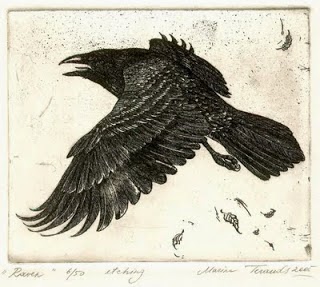The Ravens of Moor Green

A French tradition holds that bad priests become Ravens and bad nuns become Crows. Many people talk of Ravens and other crows with a certain innate knowledge, often detailing things you wouldn't necessarily find in ornithological texts. Most texts will however relate to the 'folk lore' of crows and Ravens with depictions dating back a thousand years, providing evidence of long associations and affinities with Royalty and Peasantry alike. The presence of Ravens above Centenary Wood and around Moor Green over the past few days is significant in terms of natural adaptation; my book, 'The Crows', from 1978, suggests that Ravens are "confined to - Scotland - the Shetlands, Orkneys and Scottish islands; the Lake District and part of the north Pennines, Wales, Devon and Cornwall with a few other scattered areas." Way back in time, perhaps until the early 19th Century, Ravens were city dwelling scavengers along with Black Kites, both carrion eaters, so we ...










